Vinegar is a much-loved condiment for making vinaigrettes to dress salads, as well as sauces and marinades. Grape vinegar is one of the easiest to make at home. What's more, producing your own homemade grape vinegar ensures more flavour and benefits than industrial vinegars. Follow our guide as we explain how to make your own vinegar from your grapes.
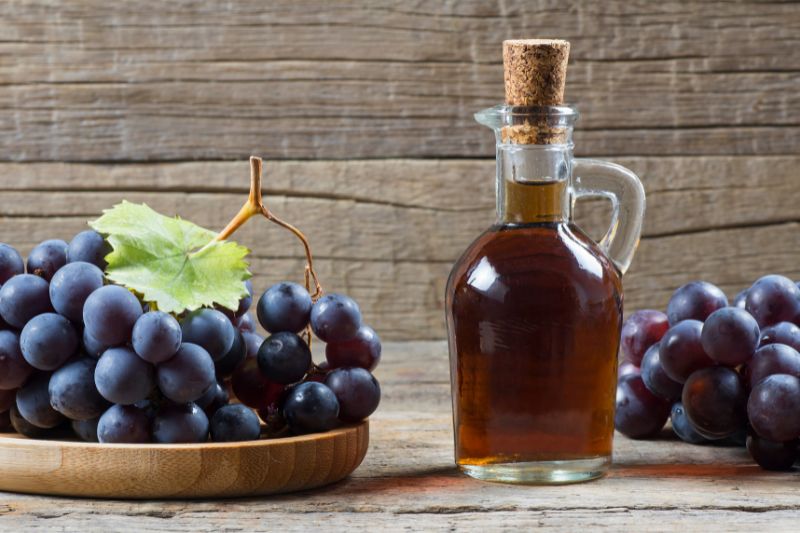
Wine Vinegar or Grape Vinegar?
Do not confuse wine vinegar with grape vinegar. Indeed, wine vinegar is made from red or white wine, which already contains alcohol, whereas grape vinegar is made from fresh grape clusters.
Which Grape Variety to Choose?
While it's true that grape vinegar can be made with any grape variety, its taste will depend on the chosen variety—much like wine, in fact. The sweeter the grapes, the faster the fermentation and the more flavourful the vinegar will be, with plenty of aromas. This is because acetic acid bacteria and yeasts need sugar to transform grape juice into vinegar. You should also use seedless grape varieties. Whether grown in your garden or bought at the market or shop, always choose organic grapes, untreated and pesticide-free.
Here are a few grape varieties to grow in your garden for homemade grape vinegar:
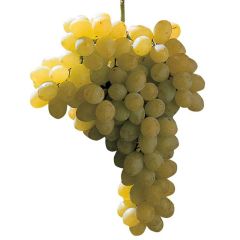
Vitis vinifera Sultanica bianca - Grape Vine
- Période de floraison June, July
- Hauteur à maturité 6 m

Vitis vinifera Aperina Nera - Seedless Grape vine
- Période de floraison June, July
- Hauteur à maturité 3,50 m

Vitis vinifera Ametista - Grape vine
- Période de floraison June, July
- Hauteur à maturité 3 m

Vitis vinifera Aperina bianca - Grape vine
- Période de floraison June, July
- Hauteur à maturité 5 m
How to Make Grape Vinegar
Ingredients:
- Ripe grapes
- A mixing bowl
- A large glass jar (like a preserving jar or jam jar) or a vinegar crock
- A piece of cloth or a filter
- An elastic band or piece of string
- 500 ml water
- 50 g sugar
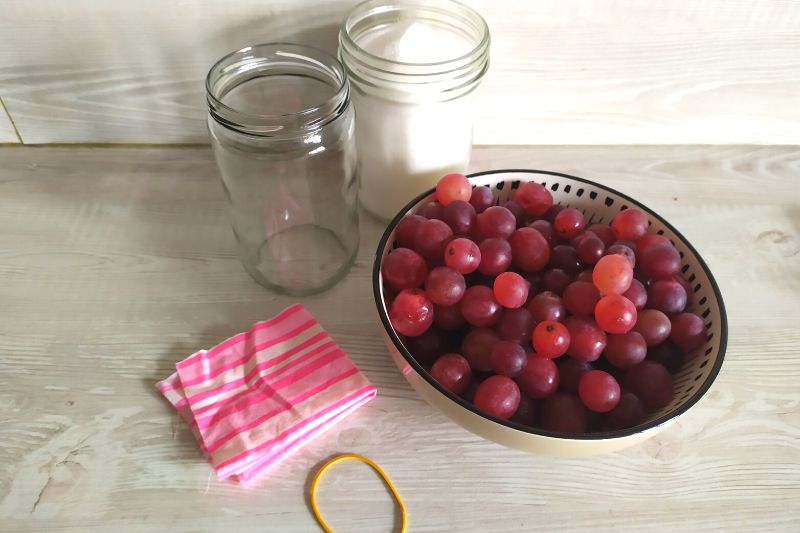
Grape Vinegar Recipe
1- Harvest fully ripe, healthy grape clusters.
2- Rinse the grapes under running water to remove dust, insects, and residue.
3- Let the clusters dry on a clean cloth, preferably in sunlight.
4- Remove the grapes from the stems and place them in a large mixing bowl.
5- Crush the grapes to extract the juice, either by hand or using a potato masher.
6- Once all the grapes are crushed, pour the mixture into a glass jar or vinegar crock. Ensure your container is very clean. Note: There’s no need to filter the juice.
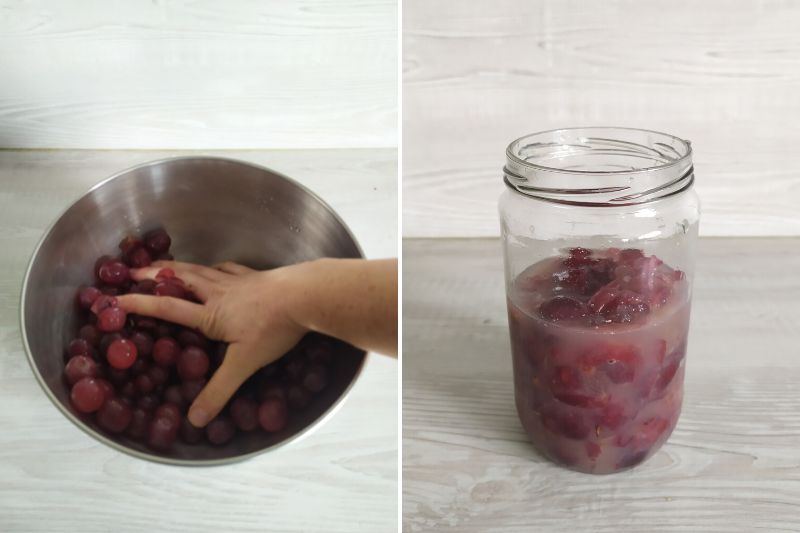
7- In a separate container, mix the water and sugar. Then pour 2 cm of the sugar water into the jar.
8- Do not seal the jar. The grape juice needs contact with air to turn into vinegar. To prevent unwanted deposits and fruit flies, replace the lid with a piece of cloth or a filter. Secure it with an elastic band or string.
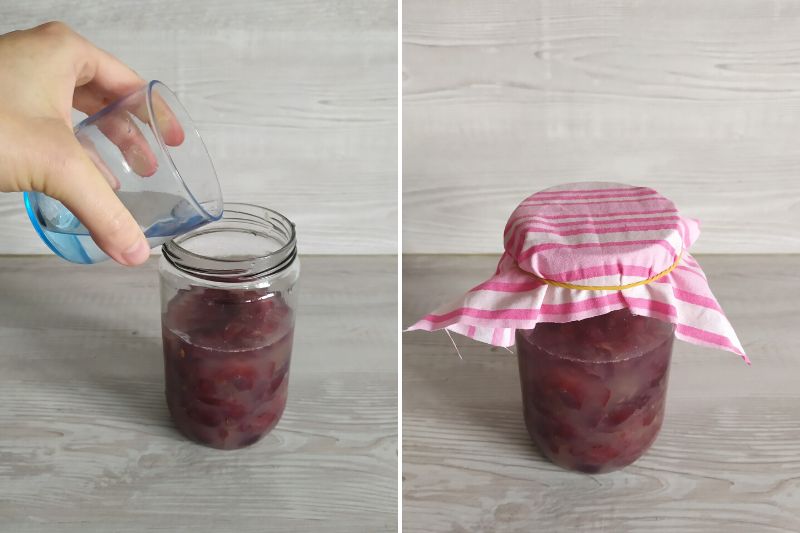
9- Place the container at room temperature (between 17 and 25°C) in a well-ventilated area for 40 days.
10- You will notice a gelatinous layer forming. This is harmless—it’s a probiotic layer. Remove it, then strain the juice through a fine sieve or coffee filter.
11- Smell the resulting juice. If it has a wine or alcohol scent or if it foams, fermentation is not yet complete. It’s important to let the juice ferment further. Return the grape juice to a jar, still covered with a cloth, and repeat the process after 2 weeks. Proper grape vinegar should no longer smell of alcohol or wine, nor produce gas in the bottle.
12- Once the grape juice has turned into vinegar, store it in a glass jar or bottle, preferably with a cork stopper. It can be kept at room temperature for up to 2 years.
Further Reading:
- Discover all our grapevine varieties.
- Learn more in our article on grapevines: planting, growing, and pruning.


































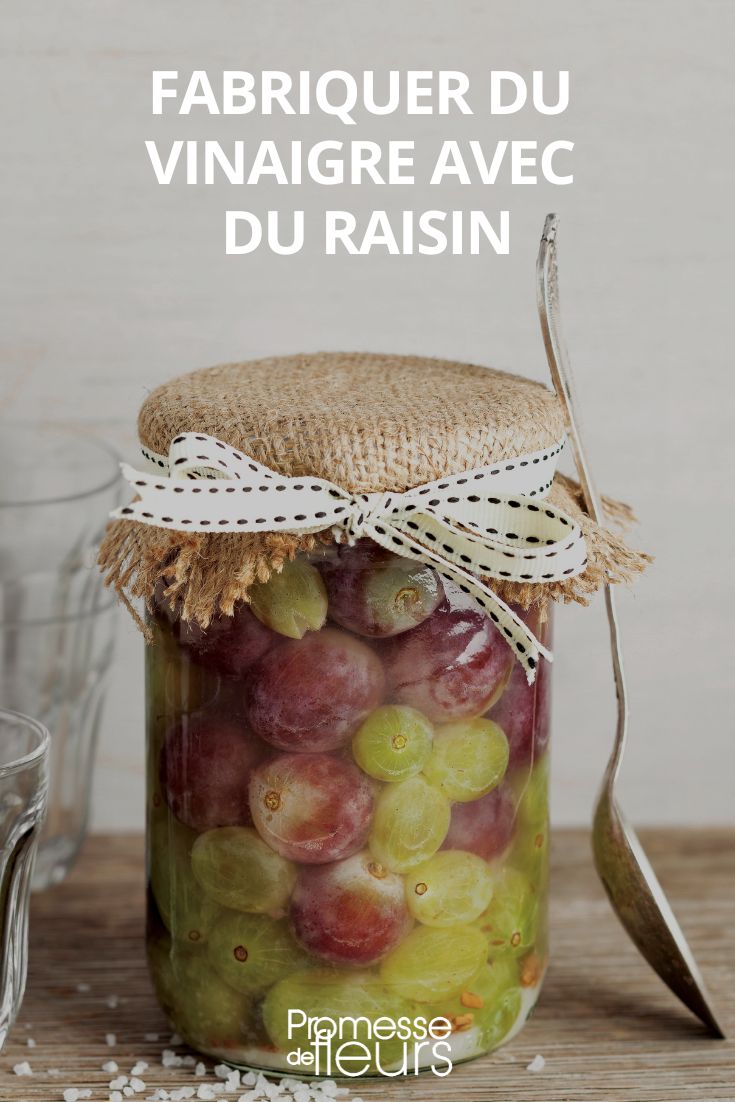
Comments